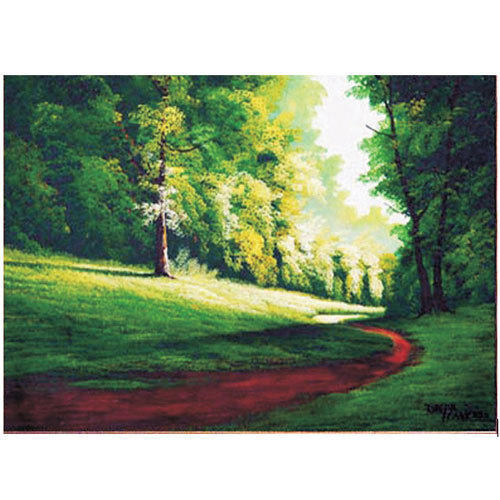Landscape painting, occasionally called landscapers adelaide design, is an artistic genre concerned with the creation of bodily features in gardens and other landscape configurations. The expression is occasionally used to describe any decorative artwork that employs fundamental geometric patterns and color combinations to produce a particular effect. Some of the most common subjects utilized in landscape paintings are lawns, gardens, fields, hills, oceans, and sky. Landscape painting can also be known as landscape artwork, and it is one of the most well-known hobbies in the United States. In reality, a lot of people think it to be a creative type of art.

Landscape Painting
Landscape painting is connected with the rich history of art. From the late medieval and Renaissance periods, as an example, famous artists like Sandro Botticelli often comprised large landscape backgrounds in their paintings. It wasn’t until the modern era that artists concentrated more on small, detailed scenes. Modern landscape painting methods include: background painting (the inception of a large landscape background), foreground painting (the creation of small detailed scenes within the bigger picture), and topographical painting (portraits of specific landscape features).
Landscape Painting
Landscape painting has an even deeper background, which is traced back to the Chinese. Paintings of the Chinese appeared throughout the Chinese culture, including literature, books, furniture, murals, and wall paper. The most famous of those paintings would be the’Mandala’, or the complex patterns painted on the walls of buildings from the Chinese provinces of Fujian and Anhui. The intricacy of the Chinese landscape paintings gave Chinese audiences much deeper meaning than simple nature. In reality, these paintings took on a mysterious quality and could be seen as true depictions of heaven.
Landscape Painting
The first portion of the history of landscape painting in China was that the copying of Western art from several European painting magazines. These prints were used as reproductions from the Chinese states, frequently on wall paper. Landscape paintings didn’t become popular until the late nineteenth century. At this point, new ideas and materials became popular. The development of new painting materials like oil, acrylics, and wax helped the industry grow.
Landscape Painting
Landscape paintings had a profound impact on China’s culture. The prevalence of landscape paintings influenced the creation of the religious scenes most commonly seen in Chinese homes. The paintings themselves served a dual purpose. They provided a glimpse of Heaven, particularly for farmers and rural dwellers, and assisted them to commemorate important events, like crop or the arrival of sons and daughters. Landscape artwork was also used to decorate houses.
The tradition of Chinese landscape painting lasted into the twentieth century and was often used to decorate homes and gardens. The tradition was not taken over by European and western art styles, but it began to gain popularity in the 1950s. Nowadays, modern art and traditional Chinese art can be seen together in public areas like museums and parks. While the symbolism of those ancient traditions has been tainted by contemporary art, the overall idea of nature remains widely accepted. In fact, many Chinese people consider natural landscapes to be beautiful.
One of the most common images portrayed in Chinese landscape paintings is that of water. Water can either be positive or negative, as in the instance of the Yangtse River (which flows through China), or even optimistic, representing the rivers that feed the nation (the Huangsui River), or even negative, representing the drought conditions in the north (the Tibet River). Other pictures include the clouds, mountain ranges, mountain lakes, and also the massive lake enclosing Chongqing (also referred to as Chong Shimu). Legend has it the very first Chinese landscape paintings (dating from the fourth and fifth centuries AD) were inspired by the Japanese art of bowing. The idea of wu-long was embraced from this Japanese clinic and finally became the hallmark of Chinese landscape paintings up to the nineteenth century.
In the late afternoon, a Stroll along the Beaches of Beijing Might be just as breathtaking as a view of This Hangzhou Mountainrange in the morning. A walk across the Beaches today could be a much different experience: in the golden age of Chinese landscape painting, there is hardly a day that goes by with no installation. If you love to see amazing landscapes, and revel in the simplicity and beauty of nature, take a stroll on the gorgeous Beaches of Beijing!



Recent Comments